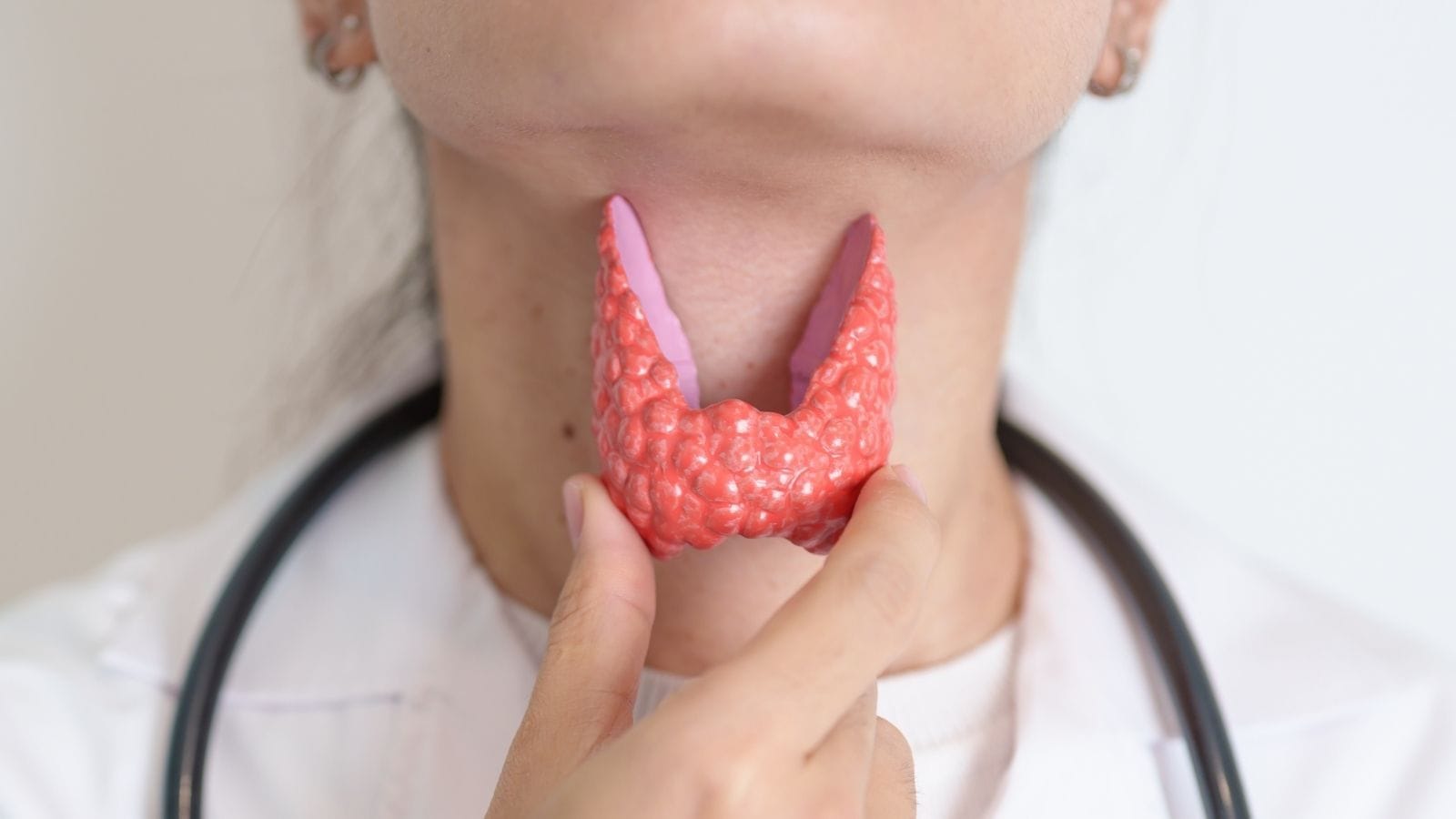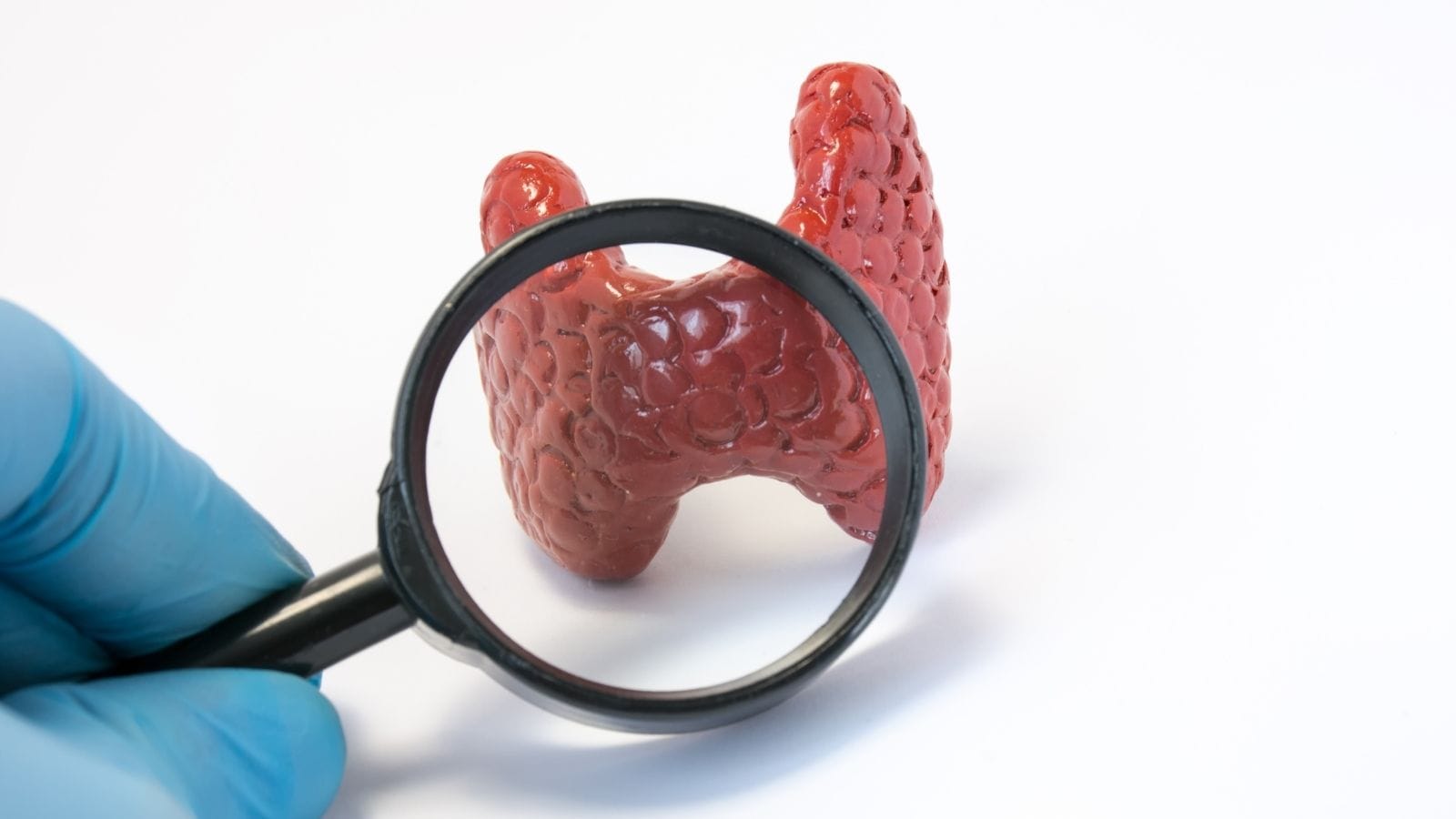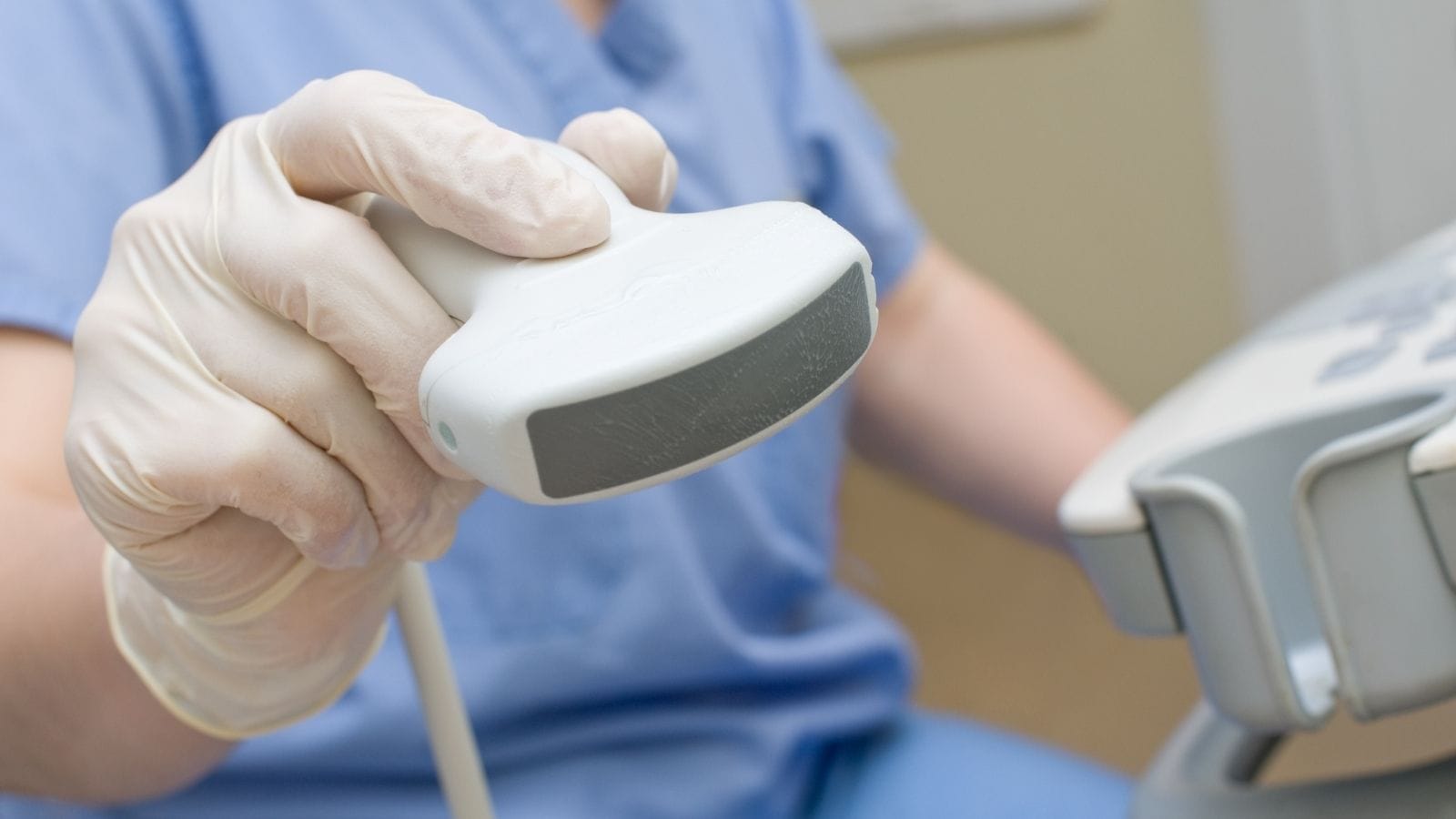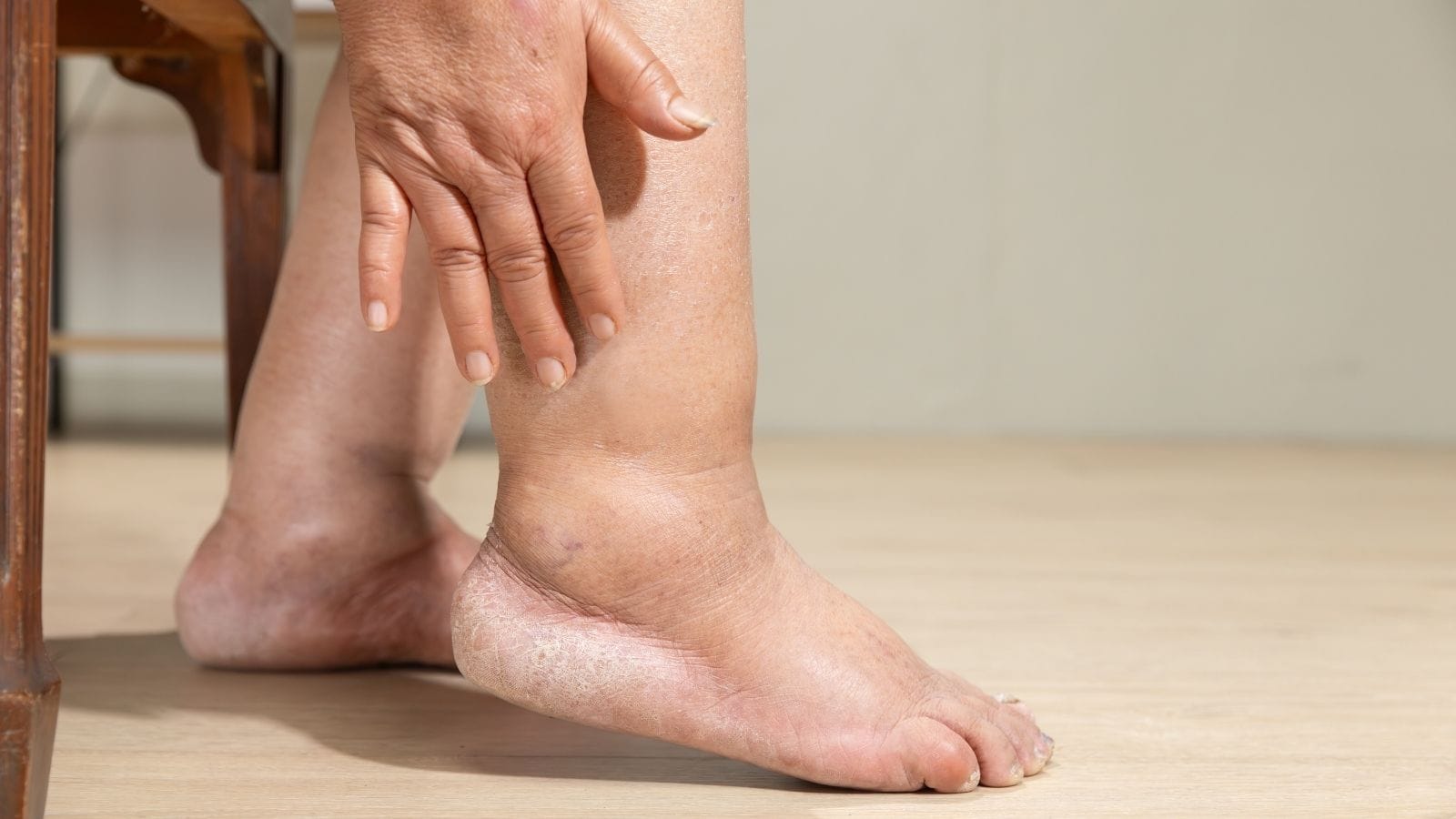Thyrotropin-releasing hormone (TRH) is a hypothalamic hormone that regulates thyroid function. It stimulates the pituitary gland to release thyroid-stimulating hormone (TSH), which in turn promotes thyroid hormone production.
The TRH test is used in endocrinology to evaluate pituitary and thyroid function. It helps detect conditions such as hypothyroidism, hyperthyroidism, or secondary endocrine disorders involving the hypothalamic-pituitary axis.
TRH plays a crucial role in maintaining hormonal balance. By controlling TSH secretion, it ensures adequate levels of thyroxine (T4) and triiodothyronine (T3), which regulate metabolism, growth, and energy production.
Abnormal TRH function may indicate hypothalamic or pituitary disease. Accurate evaluation and diagnosis support effective management of endocrine disorders and maintain overall metabolic stability.
What Exactly Is Thyrotropin-Releasing Hormone?
Thyrotropin-Releasing Hormone (TRH) is a chemical messenger produced in the hypothalamus, the control center of our brain. Structurally, it is very small, composed of only three amino acid fragments. This tiny structure is an important signal carrier in the body’s communication network.
TRH was one of the first brain hormones to be isolated and synthesized in the laboratory. This discovery was a big step in understanding how the brain controls hormones. Thanks to its special structure, it is not immediately broken down in the body, but its effect is still short-lived. The artificial form used in medical tests is called protirelin.
How Does Our Body Produce Thyrotropin-Releasing Hormone?
TRH production begins in special nerve cells in the hypothalamus. These cells first produce a much larger precursor form of TRH, a template. This large molecule contains multiple copies of TRH. This is an efficient way to quickly provide enough hormone when needed.
Later, special enzymes cut this large template to separate the TRH precursors. Even this process is controlled by thyroid hormones. If thyroid hormones are high, this cleavage slows down; if they are low, it speeds up. Finally, other enzymes give these precursors their final form, resulting in the fully active TRH molecule. This sensitive production process ensures the balance of our thyroid system.
How Long Is Thyrotropin-Releasing Hormone Active in the Body?
After production, TRH sets off to perform its task but its lifespan in the body is quite short. Once it enters the bloodstream, it remains active for only a few minutes, about 6 minutes. This rapid breakdown is actually important. It ensures that the TRH signal is temporary and allows the body to quickly adapt to changing conditions.
A special enzyme (TRH-DE) that breaks down TRH is found both in the blood and in tissues such as the brain and pituitary where TRH acts. Interestingly, the activity of this breakdown enzyme is also regulated by thyroid hormones. In other words, the body controls not only TRH production but also how long it stays active.
How Does Thyrotropin-Releasing Hormone Initiate the Thyroid Chain?
Thyrotropin-Releasing Hormone (TRH) is the first domino that initiates the operation of our thyroid system. This system is called the Hypothalamic-Pituitary-Thyroid (HPT) axis. Everything starts in the hypothalamus. Here, TRH is produced and secreted into a special region just below the hypothalamus.
This region is a strategic point where the brain and blood circulation meet. TRH then enters a special network of blood vessels, known as the pituitary portal system. This system allows TRH to be transported rapidly and intensively directly to its target, the anterior pituitary gland, without entering general circulation. This ensures the most effective delivery of the message.
Where Does Thyrotropin-Releasing Hormone Act in the Pituitary Gland?
TRH reaching the anterior pituitary gland binds to special cells called “thyrotropes.” These cells have receptors on their surface that recognize TRH. When TRH binds to these receptors, it triggers a series of chemical signals within the cell.
As a result of these signals, Thyroid Stimulating Hormone (TSH) stored in thyrotrope cells is secreted into the bloodstream. In this way, TRH commands the pituitary: “It’s time to release TSH!” The released TSH then travels to the thyroid gland, stimulating the production of thyroid hormones (T4 and T3). These hormones regulate the body’s metabolism.
Does Thyrotropin-Releasing Hormone Only Increase TSH Secretion?
TRH’s effect in the pituitary is not limited to TSH. It also stimulates other cells called “lactotropes” to increase the secretion of prolactin (PRL). Prolactin is best known for its role in milk production, but it also plays roles in reproductive functions.
It is interesting that TRH affects both TSH, which regulates metabolism, and prolactin, which is related to reproduction. This suggests that TRH may link the body’s general energy status to reproductive functions. Such connections between different systems are important for maintaining overall balance.
How Do Thyroid Hormones Control Thyrotropin-Releasing Hormone Secretion?
The most important control mechanism for TRH secretion is the “negative feedback” from thyroid hormones themselves. When blood T4 and T3 hormone levels reach sufficient levels, these hormones send a “brake” signal to the brain, affecting both the hypothalamus and pituitary.
In the hypothalamus, high thyroid hormones suppress TRH production and processing of its precursor. In the pituitary, they reduce TSH production and secretion. As a result, thyroid hormone production slows down. If hormone levels fall, this brake is removed and the system accelerates again. This thermostat-like mechanism keeps thyroid hormone levels within a narrow range.
What Is the Role of Tanycyte Cells in Regulating Thyrotropin-Releasing Hormone?
Special cells called “tanycytes” located in the median eminence of the hypothalamus also play an active role in TRH regulation. These cells are strategically located where TRH is released into the blood.
Tanycytes contain an enzyme that converts T4 hormone in the blood to its more active form, T3. The local T3 produced here suppresses nearby TRH-producing nerve cells. Tanycytes also produce the TRH-DE enzyme that breaks down TRH. High thyroid hormone levels increase the production of this enzyme, making some TRH inactive before it reaches the pituitary. Tanycytes act as gatekeepers, helping to adjust the strength of the TRH signal.
Does the Body’s Energy Balance Affect Thyrotropin-Releasing Hormone Levels?
Yes, the body’s overall energy status significantly affects TRH secretion. The hormone leptin, secreted from fat tissue and signaling satiety, generally increases TRH production. When there are sufficient energy stores in the body, it supports normal thyroid function.
Conversely, during prolonged starvation or negative energy balance, the body wants to conserve energy. In this case, TRH production is suppressed. Factors such as reduced leptin levels, increased tanycyte activity, and appetite-stimulating brain signals suppress TRH. This mechanism helps slow metabolism during tough times.
Do Cold Weather or Stress Change Thyrotropin-Releasing Hormone Secretion?
Environmental factors can also affect TRH secretion. Cold exposure is a strong stimulus. When the body needs to increase metabolism to maintain body temperature, signals from the brainstem stimulate TRH neurons in the hypothalamus. This increases TRH and then TSH secretion, which in turn increases thyroid hormone production and heat generation. In the cold, the need for heat temporarily overrides the normal feedback mechanism.
On the other hand, severe physical or psychological stress, trauma, or infection usually suppress TRH and TSH secretion. Stress hormones or substances released during infection may reduce TRH production. This can be part of a strategy to temporarily slow down long-term metabolic processes while directing the body’s energy to the immediate emergency.
What Else Does Thyrotropin-Releasing Hormone Do in the Brain Besides the Thyroid?
TRH’s functions are not limited to managing the thyroid axis. It is also found in many areas of the brain outside the hypothalamus, where it acts as a neurotransmitter or neuromodulator. That is, it facilitates or regulates communication between nerve cells.
TRH and its receptors are found in areas of the brain involved in learning, memory, emotion, motivation, the brainstem, and the spinal cord. TRH here can affect various brain functions by altering the release and effects of other important brain chemicals (such as dopamine, serotonin, norepinephrine). It acts like a conductor, modulating the actions of other neurotransmitters.
Can Thyrotropin-Releasing Hormone Affect Our Mood or Wakefulness?
Yes, TRH in the brain has marked effects on our behavior and mood. One of its best-known effects is to increase alertness and general activity level. It is thought to stimulate other brain systems that provide wakefulness.
There is growing evidence that the TRH system also plays a role in mood regulation. Animal experiments and some human studies have observed that TRH or its analogs alleviate symptoms of depression and reduce anxiety. Mice lacking TRH receptors appear more depressed and anxious, highlighting the importance of natural TRH for normal mood. TRH activity in emotion-related brain regions is thought to be associated with our mood.
Does Thyrotropin-Releasing Hormone Have Functions in Other Organs of the Body?
TRH is not limited to the brain and pituitary. This small peptide or its genetic code has also been detected in other organs. For example, it is found in insulin-producing cells in the pancreas and is thought to help regulate insulin secretion.
It has been suggested that it may affect intestinal motility in the gastrointestinal system. Its presence in reproductive organs (prostate, testis, ovary) suggests it may have local regulatory roles there. TRH traces have even been found in the heart, retinal tissue, and skin. Although its functions in these peripheral tissues have not yet been fully elucidated, this shows how widespread the effects of TRH might be in the body.
What Was the Purpose of the Previously Used Thyrotropin-Releasing Hormone Stimulation Test?
The TRH Stimulation Test was a test performed using synthetic TRH (protirelin). Protirelin was administered intravenously to the patient and then blood was drawn at intervals to measure how much TSH was secreted by the pituitary gland. The main purpose was to assess the pituitary’s response to TRH.
This test was especially useful in understanding the causes of hyperthyroidism (overactive thyroid) or hypothyroidism (underactive thyroid). For example, TSH response would generally be blunted in hyperthyroidism. In pituitary hypothyroidism, the response would also be weak, while in hypothalamic hypothyroidism, the TSH response would be delayed. In primary hypothyroidism, the TSH response would be exaggerated.
Why Is the Thyrotropin-Releasing Hormone Test Used Less Frequently Today?
Today, TSH measurement methods are much more sensitive. Third-generation TSH tests can reliably measure even very low TSH levels. Therefore, the diagnosis of hyperthyroidism can usually be made by TSH measurement alone, making the TRH test unnecessary.
Similarly, the diagnosis of primary hypothyroidism is easily made with high TSH and low thyroid hormone levels. In cases of suspected central hypothyroidism (pituitary or hypothalamic origin), the test could theoretically help distinguish, but results are not always clear and rarely change treatment. Also, because the test has some side effects and rare risks, routine use has been largely abandoned. However, it can still be used in very special cases.
What Happens If There Is Not Enough Thyrotropin-Releasing Hormone? (Tertiary Hypothyroidism)
If the hypothalamus cannot produce enough TRH, the pituitary does not receive enough stimulation to secrete TSH. As a result, the thyroid gland also cannot produce enough thyroid hormone. This is called “tertiary hypothyroidism” and is included under the umbrella of “central hypothyroidism.”
The causes of tertiary hypothyroidism are varied. Tumors affecting the hypothalamus, head trauma, brain surgeries, cranial radiotherapy, some inflammatory diseases, or rare genetic disorders can cause TRH deficiency. Symptoms are generally similar to those of ordinary hypothyroidism (fatigue, cold intolerance, etc.) but often milder. An important point is that TRH deficiency is usually seen together with other pituitary hormone deficiencies.
How Is Thyrotropin-Releasing Hormone Deficiency Diagnosed?
The diagnosis of central hypothyroidism (both secondary and tertiary) can be challenging, as TSH is not a reliable marker. The diagnosis is usually made when, despite low or low-normal free T4 (fT4) levels, TSH is “inappropriately” normal or low, meaning it is not elevated as expected.
While TSH is high in primary hypothyroidism, here TSH is low or not elevated despite low fT4. This “inappropriate” TSH finding is the key clue. To confirm the diagnosis and find the underlying cause, other pituitary hormones are tested and MRI imaging of the hypothalamic-pituitary region is usually required. Treatment consists of replacing the missing thyroid hormone with levothyroxine.
Is There a Connection Between Thyrotropin-Releasing Hormone and Depression or Anxiety?
Yes, it is thought that there is a relationship between the TRH system and mood disorders. In past TRH stimulation tests, it was observed that some patients with major depression had a blunted TSH response. This was thought to be due to desensitization of pituitary receptors caused by chronic TRH secretion, which may be increased in depression.
In addition, TRH or its analogs have been found to show antidepressant and anxiolytic effects in animal experiments. Mice lacking TRH receptors also appear more depressed and anxious, supporting this link. Since thyroid hormones themselves have significant effects on mood, this complex relationship between the TRH system and mood is an important area of research.
Can Thyrotropin-Releasing Hormone Be Related to Neurological Diseases?
The regulatory and neuroprotective roles of TRH in the brain have also associated it with some neurological diseases. Especially in progressive coordination disorders called “spinocerebellar degeneration (SCD),” TRH-like drugs (such as taltirelin) have been used to relieve symptoms.
In animal experiments, TRH and its analogs have shown neuroprotective effects in conditions such as stroke, spinal cord injury, and head trauma. Potential effects on diseases such as ALS, Parkinson’s, and Alzheimer’s are also being investigated. These findings demonstrate the importance of the TRH system for neurological health and its potential for future therapies.
Why Were Thyrotropin-Releasing Hormone Analog Drugs Developed?
Natural TRH itself is not very practical as a medication. It is broken down very quickly in the body, is not well absorbed orally, and cannot pass into the brain effectively. It can also cause side effects such as unwanted TSH and prolactin secretion.
Scientists have developed new molecules, or “TRH analogs,” by altering the chemical structure of TRH to overcome these problems. These analogs are more stable than natural TRH, can be taken orally, cross into the brain more easily, and sometimes have more targeted effects or fewer side effects. The goal was to make the potential benefits of TRH suitable for clinical use.
What Are Taltirelin and Rovatirelin, and What Are They Used For?
Taltirelin and rovatirelin are important TRH analogs that have been developed. Both have been studied and developed especially to alleviate the symptoms of ataxia (balance and coordination disorder) seen in patients with spinocerebellar degeneration (SCD).
Taltirelin is an approved and used drug in Japan for this purpose. Clinical studies have shown improvement in ataxia scores. Rovatirelin is a newer analog and has been tested in clinical trials. While it did not make a significant difference on its own, there are findings of modest improvement in some subgroups of patients. These drugs are important in demonstrating the potential of the TRH system in neurological diseases.

Interventional Radiology and Neuroradiology Speaclist Prof. Dr. Özgür Kılıçkesmez graduated from Cerrahpaşa Medical Faculty in 1997. He completed his specialization at Istanbul Education and Research Hospital. He received training in interventional radiology and oncology in London. He founded the interventional radiology department at Istanbul Çam and Sakura City Hospital and became a professor in 2020. He holds many international awards and certificates, has over 150 scientific publications, and has been cited more than 1500 times. He is currently working at Medicana Ataköy Hospital.









Vaka Örnekleri